How to Identify and Dispose of Infectious Waste
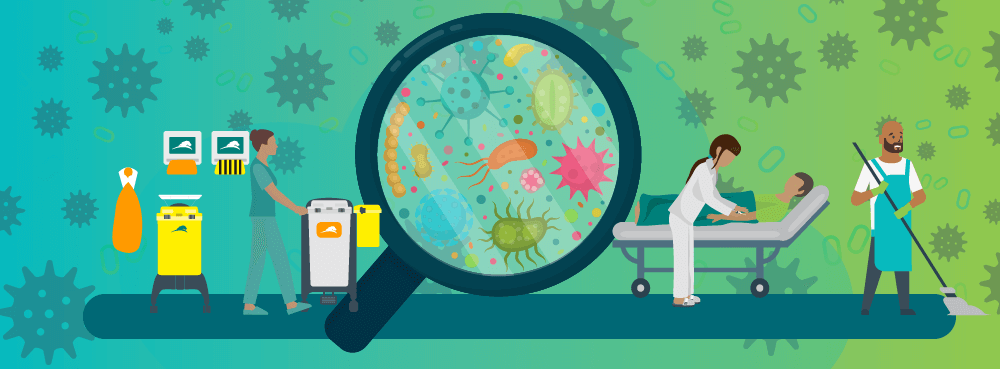
How can you be sure if waste is infectious or non-infectious?
Do you ever have trouble identifying infectious waste? And when you do, do you know the safest way to get rid of it?
Understanding healthcare waste is essential for creating a safer working environment and part of that is knowing how to identify and dispose of infectious waste – getting it wrong can have terrible consequences.
This mini-guide on infectious waste management will enable you to handle and dispose of such waste with peace of mind and the confidence of knowing you’re making healthcare safer.
TOPICS WE WILL COVER:
2 / Infectious waste vs non-infectious waste.
3 / Understanding the offensive waste stream.
4 / How to identify infectious waste.
5 / The importance of proper waste segregation.
6 / How to dispose of infectious waste.
7 / Cleaning contaminated surfaces.
8 / Improve your staff expertise.
What Is Infectious Waste?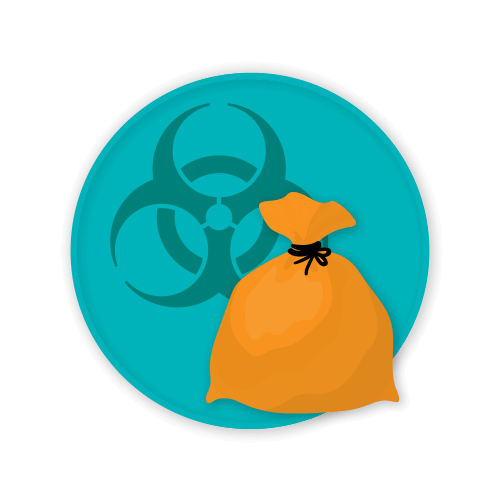
Infectious waste refers to contaminated waste materials that have the potential to transmit infections to humans or animals. Such waste typically originates from healthcare and laboratory settings, although it may also be generated through healthcare at home.
Infectious waste contains pathogens like bacteria, viruses, and other microorganisms – posing a hazard to anyone coming into contact with it.
It includes used medical equipment and supplies, personal protective equipment (PPE), and other items saturated with bodily fluids from patients suspected or known to be infectious.
This type of clinical waste also has the potential to contaminate surfaces or materials it comes into contact with.
A Note on High-Consequence Infectious Waste
Whilst rare in the healthcare setting and usually only found in specialist labs, high-consequence infectious diseases such as the Ebola virus, Lassa virus, or Monkeypox are a few samples of Category A pathogens.
The waste generated from the treatment of patients with high-consequence infectious diseases or the research into them must be managed separately to the Category B infectious waste this blog relates to.
Your hospital should have a high-consequence infectious waste procedure which covers the different packaging requirements and securely isolates the waste from all other waste streams – it must never be placed in the orange bag waste stream.
Infectious Waste Vs Non-Infectious Waste
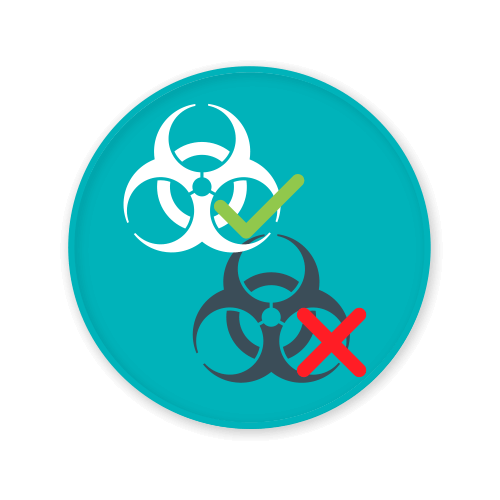 There’s often confusion around waste terminology, especially when defining what is and isn’t clinical waste, so let’s define the difference between infectious and non-infectious waste:
There’s often confusion around waste terminology, especially when defining what is and isn’t clinical waste, so let’s define the difference between infectious and non-infectious waste:
- Infectious Waste – Refers to waste contaminated by harmful pathogens that pose a risk of infection to anyone who comes into contact with it.
- Non-Infectious Waste – Refers to regular waste materials like paper, plastic, and general waste that doesn’t carry the risk of spreading infections.
Non-infectious waste is suitable for direct disposal, recovery, or recycling and whilst proper management is still important, it doesn’t involve the same level of concern for disease transmission.
A good example of non-infectious waste within the healthcare sector is offensive waste.
Understanding the Offensive Waste Stream

Offensive waste is non-infectious healthcare waste that doesn’t contain any pharmaceutical or chemical substances but may be unpleasant to anyone who comes into contact with it.
Offensive waste consists of incontinence pads, bedpans, urinal bottles, PPE, empty used non-medicated IV bags, and other recognisable non-infectious healthcare waste and other items contaminated with non-infectious bodily fluids.
It’s the most commonly over-classified waste in the healthcare environment, usually by being placed in the infectious, orange bag waste stream.
You’ll need to correctly classify and segregate offensive waste to achieve targets such as the 20-20-60 waste split laid out in the NHS Clinical Waste Strategy. Offensive waste must always be deposited into bins lined with a yellow sack with black stripes – often called a tiger sack.
So always ask yourself before disposing of waste in the infectious waste stream:
Is this item genuinely infectious, or is it just unpleasant?
How to Identify Infectious Waste

The HTM 07:01, the Department of Health’s guidance on the safe management of healthcare waste, tells us that infectious waste typically comes from hospital units dealing with patients (or their samples) and specific specialised areas.
Without testing waste it’s hard to be certain it’s contaminated with harmful agents, yet it’s not practical to test every possibly infectious item.
However, there are ways to determine the likelihood of it being infectious. Consider if:
- It came from a patient with an infection, or from being in contact with someone carrying a contagious disease.
- It came from a patient displaying infectious symptoms who is yet to be fully diagnosed.
- It came from a patient with a history of a known infection – such as a blood-borne virus or Clostridioides difficile.
- A healthcare provider has confirmed it’s infectious.
- It’s a substance used in lab work containing infectious agents, or was in touch with them.
If the answer to any of those is “yes”, the waste may be infectious and you should treat it as such.
The Importance of Proper Waste Segregation
Healthcare waste has the potential to have a negative impact on infection control, mismanagement of waste can have dire consequences.
When waste isn’t properly segregated there’s an increased risk of cross-contamination and the potential spread of infectious disease.
Contaminated waste may infect staff, patients, and visitors. It can also end up spreading outside your facility into the environment with the potential to cause damage to the local ecosystem – harming people and wildlife.
Whilst poor segregation can result in infectious waste contaminating non-infectious waste, there are also negative impacts of getting it wrong the other way around.
When offensive waste is incorrectly disposed of as infectious waste, this results in overtreatment which has a negative impact from both a financial and environmental perspective. The carbon footprint of offensive waste is typically half that of infectious waste.
So, why is correct waste segregation so important?
Because if you get it wrong, you’re putting people and the environment at risk of harm.
How to Dispose of Infectious Waste
Always follow the training you’ve received on how to safely dispose of waste materials in your organisation as there may be procedures in place specific to your facility.
There are two options for the correct disposal of infectious waste:
- If it’s infectious but doesn’t have any other hazardous properties – Orange bag
- If it’s infectious and contaminated with medicines or chemicals – Yellow bag
Within a healthcare setting, nearly all of the infectious waste will be placed in orange bags. Yellow bags are seen more frequently in laboratory environments.
In a hospital, Pathology, Microbiology and other diagnostic labs will need yellow bags to dispose of the chemically contaminated infectious waste they produce.
Yellow-bagged infectious waste requires high-temperature incineration – an energy and carbon-intensive process which is required to break down the chemical compound present within the waste.
Orange-bagged waste is sent for alternative treatment, a more efficient and sustainable process.
It’s crucial that disposal is done right and all the more so when you’re dealing with infectious waste.
Steps for Safely Disposing of Infectious Waste
Your workplace will have procedures in place for handling, moving, and managing infectious waste – here are some standard steps:
- Clinical staff must segregate waste at the point of production and put the waste in the correct bin.
- Domestic and portering staff must wear the correct personal protective equipment (PPE) when handling waste.
- When an infectious waste sack is no more than three-quarters full, use the swan-neck method to tie it.
- Carry it away from your body to the waste hold using a route that minimises exposure to others.
- Ensure you put the sack in the correct bin in the waste hold.
- Make sure the bin is locked after you have placed the sack into it.
- Always handle infectious waste as little as possible.
This may go without saying but we’re going to say it anyway: Don’t touch anything other than the waste you’re handling and once disposed of, remove and dispose of your gloves like you would with any other infectious item.
And then wash and sanitise your hands.
Cleaning Contaminated Surfaces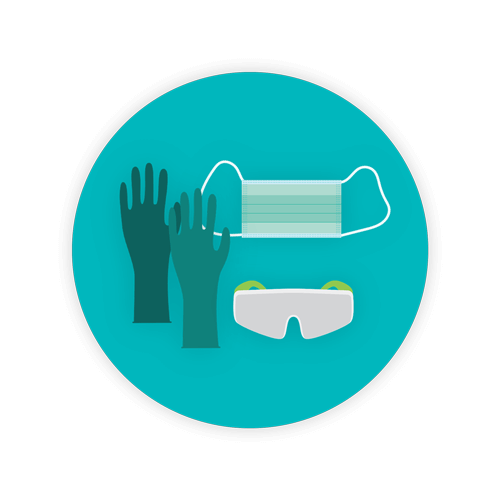
Infectious waste spillages pose an immediate risk to anyone or anything coming into contact with them – be sure to clean and sanitise the contaminated area straight away.
When you wipe down a surface it may look clean enough, but don’t be fooled! Infectious organisms are like uninvited guests… They have a habit of lingering.
To clean contaminated surfaces:
- Wear the correct personal protective equipment (PPE).
- Isolate the affected areas to prevent the further spread of contaminants.
- Remove any visible debris.
- Choose the appropriate cleaning agent and follow the user instructions.
- Proceed to clean the affected area following best practices.
For more information on cleaning contaminated surfaces, consult your organisation’s Commitment to Cleanliness Charter or the 2021 NHS National Standards of Healthcare Cleanliness Guidance.
Improve Your Staff Expertise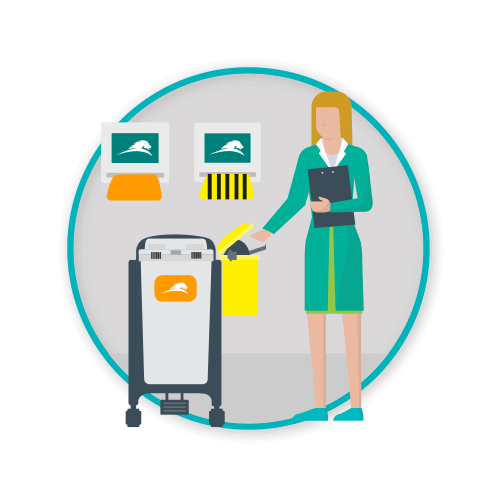
Healthcare waste is a vast subject that when understood can drive positive change for staff, patients, visitors, and the healthcare environment as a whole.
At Sharpsmart, we provide much more than a waste management service. We work within the four walls of your organisation empowering healthcare workers to make healthcare safer.
If you’d like help with your waste or would like more information on waste education and consultancy, please get in touch.

